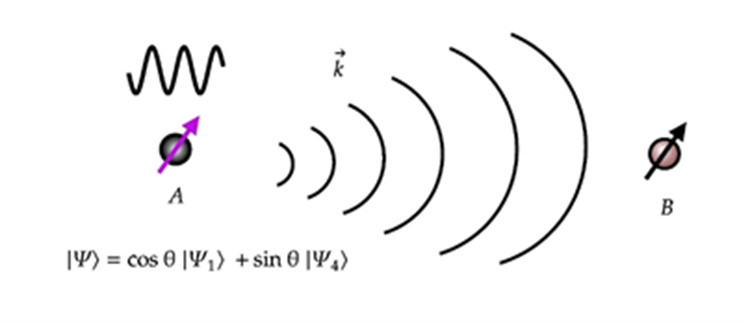NKU Team Makes the Prediction about Spin Angular-Momentum Waves
Recently, progress was made in addressing the basic problems of quantum physics by the research team led by Professor Jingling Chen from the Theoretical Physics Division of the Chern Institute of Mathematics at Nankai University. The research team first proposed the concept of spin angular-momentum waves internationally, and designed a thought experiment to generate and detect the spin angular-momentum waves, based on the oscillation of spin angular momentum of Dirac electron. On December 28, 2023, the relevant research results were published online in Results in Physics (which is one of the Elsevier journals).
The Maxwell equations, which are one of the most important formulas in the history of science, not only incorporate classical electrodynamics, but also predict electromagnetic waves, profoundly affecting the development of human society. In 1954, Chen-Ning Yang and Robert Laurence Mills extended the Maxwell equations to non-Abelian cases, resulting in the famous Yang-Mills equations. At the same time, the concept of gauge field aroused great interest among physicists and mathematicians. Furthermore, the standard model based on the Yang-Mills theory incorporated three of the four basic interactions known in nature (electromagnetic, weak, and strong interactions), demonstrating that the Yang-Mills theory is a solid physical theory. But another fundamental question was ignored by experts, that is, can the Yang-Mills equations as an extension of the Maxwell equations predict a novel type of wave? As we know, the electromagnetic wave is predicted by the Maxwell equations.
The above question inspires the research team at Nankai University to explore the spin angular-momentum waves. However, even in the sourceless vacuum, the Yang-Mills equations are nonlinear partial differential equations, and the interaction terms between the potentials and fields are very complex. The research team considered the weak-coupling approximate solution of the Yang-Mills equation in vacuum without source. Through calculation, it was found that the solution still satisfied the wave equation similar to electromagnetic waves, but its amplitude contained the spin angular momentum operator, and thereby named the spin angular-momentum wave. In relativistic quantum mechanics, when a Dirac electrons is in a superposition state of positive and negative energy and positive and negative helicity, a relativistic effect called spin oscillation (“spin Zitterbewegung’’) will automatically occur. Based on this effect, the researchers proposed a thought experiment to generate and detect the spin angular-momentum waves. If the quantum superposition state of Dirac electron can be obtained in the laboratory, there is hope that the spin angular-momentum waves will be observed.

Schematics for hypothetical experiment on detection of spin angular momentum waves
This research achievement has been highly recognized by peers at home and abroad. The idea of considering the new waves from Non-Abelian Yang-Mills equation is quite interesting, and it is also interesting solely from mathematical physics to solve the equation for the vacuum. Professor C. H. Oh from the National University of Singapore said that it was a great work. One expert of China said If the above research is confirmed by experiments, it may open up new directions and attract widespread attention in the field of physics.
Paper Link:
https://doi.org/10.1016/j.rinp.2023.107300
(Edited and translated by Nankai News Team.)









